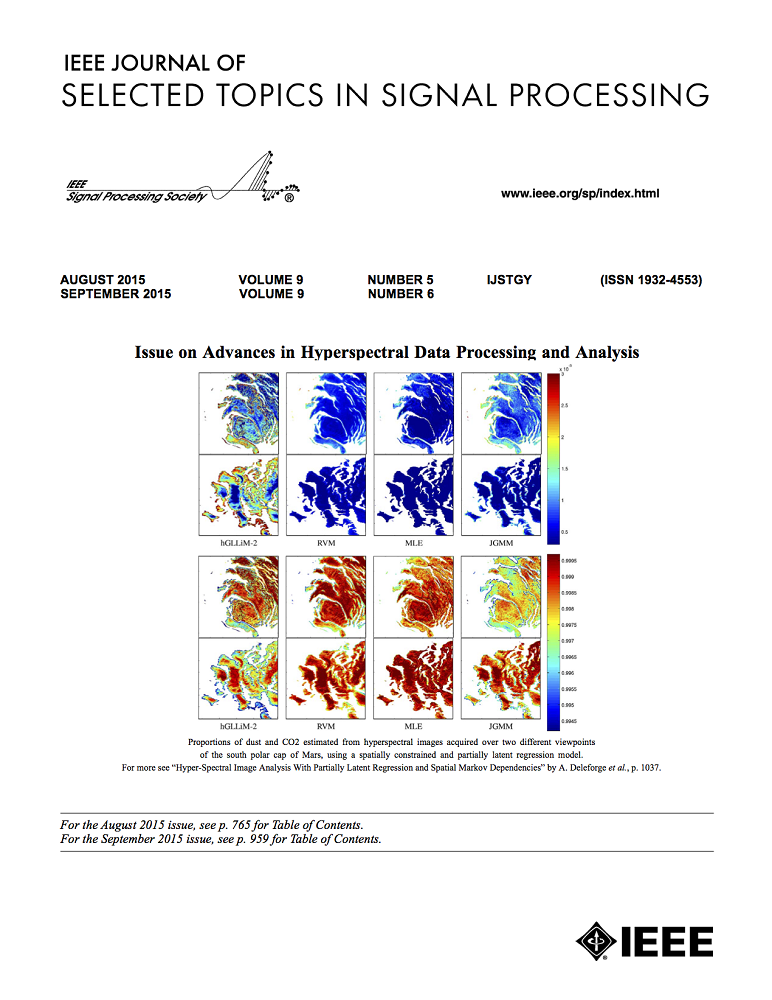Contention-Based mMTC/URLLC Coexistence Through Coded Random Access and Massive MIMO
IF 8.7
1区 工程技术
Q1 ENGINEERING, ELECTRICAL & ELECTRONIC
IEEE Journal of Selected Topics in Signal Processing
Pub Date : 2024-09-10
DOI:10.1109/JSTSP.2024.3457381
引用次数: 0
Abstract
Radio access network slicing is considered a key feature in next-generation multiple access. In this paper, we investigate the coexistence between massive machine-type communication (mMTC) and ultra-reliable low-latency communication (URLLC) services. To meet their heterogeneous requirements, we propose a novel grant-free scheme that leverages coded random access, massive multiple-input multiple-output (MIMO) processing, and both the preamble and the power domain to enable non-orthogonal access on shared frequency and time resources. To illustrate the concept, mMTC users transmit packet replicas having different preambles in various time slots, capitalizing on the temporal domain. Meanwhile, the URLLC users apply a more aggressive strategy that leverages pilot mixture and power diversity to meet the stringent latency and reliability requirements. Contention resolution is achieved through a signal processing algorithm based on successive interference cancellation (SIC). We show that the co-design of signal processing and access protocol is crucial to meet both service requirements, and we derive fundamental limits where possible. In instances where direct derivation proves impractical, we conduct symbol-level simulations of the whole system to gain comprehensive insights. The simulations reveal that the proposed scheme can satisfy mMTC/URLLC coverage density, reliability, and latency requirements, while outperforming orthogonal allocation schemes.编码随机接入和大规模MIMO下基于争用的mMTC/URLLC共存
无线接入网切片被认为是下一代多址接入的关键特性。本文研究了海量机器型通信(mMTC)和超可靠低延迟通信(URLLC)服务共存的问题。为了满足它们的异构需求,我们提出了一种新的免授权方案,该方案利用编码随机访问、大规模多输入多输出(MIMO)处理以及前导域和功率域来实现共享频率和时间资源上的非正交访问。为了说明这个概念,mMTC用户在不同的时隙中传输具有不同前导的数据包副本,利用时域。同时,URLLC用户采用更积极的策略,利用先导混合和功率分集来满足严格的延迟和可靠性要求。通过基于连续干扰抵消(SIC)的信号处理算法实现争用解决。我们表明,信号处理和访问协议的协同设计对于满足这两种服务需求至关重要,并且我们在可能的情况下推导出基本限制。在直接推导证明不切实际的情况下,我们对整个系统进行符号级模拟,以获得全面的见解。仿真结果表明,该方案能够满足mMTC/URLLC的覆盖密度、可靠性和时延要求,且优于正交分配方案。
本文章由计算机程序翻译,如有差异,请以英文原文为准。
求助全文
约1分钟内获得全文
求助全文
来源期刊

IEEE Journal of Selected Topics in Signal Processing
工程技术-工程:电子与电气
CiteScore
19.00
自引率
1.30%
发文量
135
审稿时长
3 months
期刊介绍:
The IEEE Journal of Selected Topics in Signal Processing (JSTSP) focuses on the Field of Interest of the IEEE Signal Processing Society, which encompasses the theory and application of various signal processing techniques. These techniques include filtering, coding, transmitting, estimating, detecting, analyzing, recognizing, synthesizing, recording, and reproducing signals using digital or analog devices. The term "signal" covers a wide range of data types, including audio, video, speech, image, communication, geophysical, sonar, radar, medical, musical, and others.
The journal format allows for in-depth exploration of signal processing topics, enabling the Society to cover both established and emerging areas. This includes interdisciplinary fields such as biomedical engineering and language processing, as well as areas not traditionally associated with engineering.
 求助内容:
求助内容: 应助结果提醒方式:
应助结果提醒方式:


